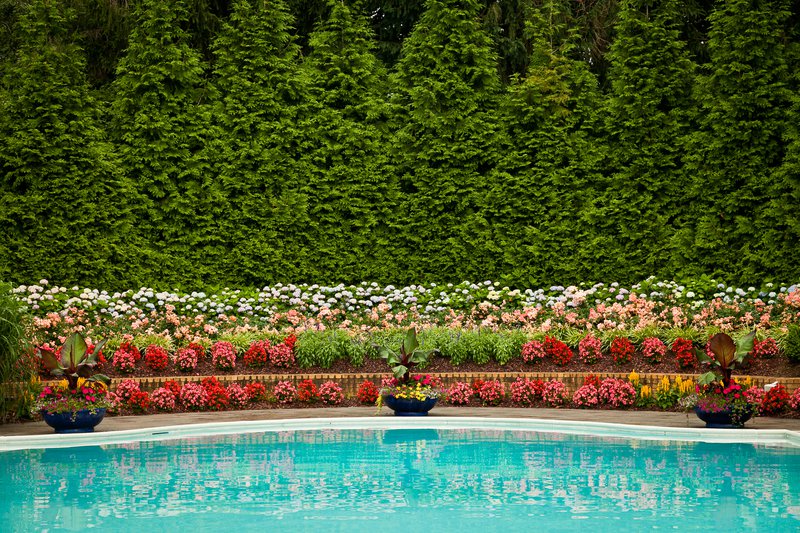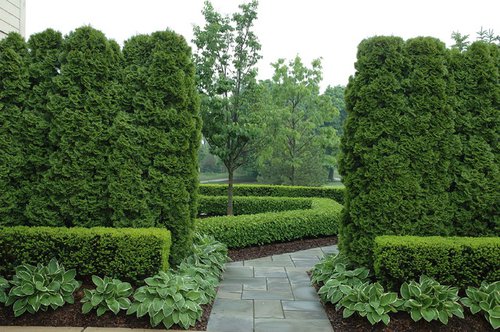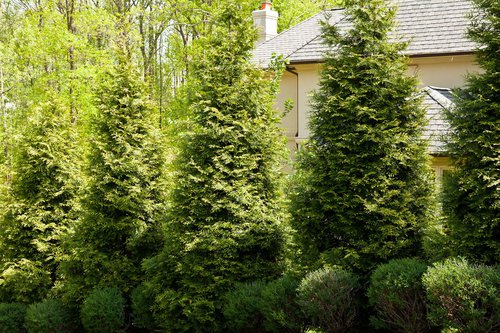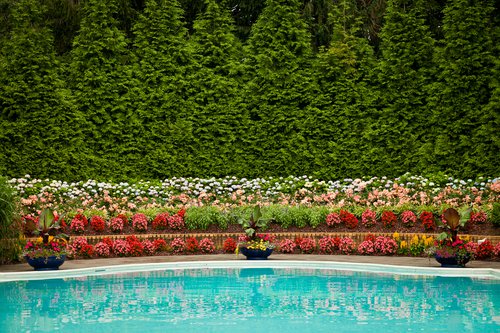
Create a Sanctuary of Seclusion
A living, breathing way to bring shape to a private section of your property.
Your yard is your space to relax. Perhaps you’ve installed a pool for your family to enjoy the warm weather months. Maybe you have a favorite corner or hammock to lounge in and read a book. Or, certain outdoor spaces are meant to hold private gatherings just for you and your guests.
In any of these cases, having planted privacy screens can add an extra level of comfort for a retreat that is exclusive and peaceful.
Using plantings to veil an area of your yard is not only functional, but also beautifies a space to create a natural, lush environment. It’s a living, breathing way to bring shape to a private section of your property.
Picking Your Plants

Trees such as the Green Giant Arborvitae and Cryptomeria are popular options for screening. Both are fast growing, deer resistant, and are aesthetically pleasing.
Green Giant Arborvitae, as its name implies, is an extremely fast-growing evergreen (up to three feet per year) and can reach sizes as high as 50-60 feet, easily surpassing any fence and blocking the neighbors’ line-of-sight. But don’t think you have to let it grow that high — you can ultimately determine the size based on your needs and design. The Green Giant Arborvitae can be topped at your preferred height, which is a unique trait for screening trees.
Cryptomeria have more of a pillowy, soft texture and a brighter green color in contrast to blue-green leaved evergreens. With its name literally meaning “hidden parts,” the large, ornamental evergreen tree is perfect for a sanctuary-like setting. It is capable of reaching 50-80 feet at its full height, but only reaches about 20 feet wide, giving it a pyramidal shape.
Spruces are also beautiful options for screening. The Colorado Blue Spruce variety is great for adding a different color to an otherwise very green area, and they contrast well with Green Giants and Cryptomeria. Other fantastic evergreen screening plants include Deodar Cedar, Norway Spruce, Alaskan Cedar, and Hollies. Both a uniform look and a mixed variety of plants can be dramatic and lovely ways to screen.
Evergreens are typically preferred over deciduous plantings, as the deciduous trees will lose their leaves (and therefore their screening ability) over winter months. If you’re looking to screen a pool during the summer, that may be okay. But if you want year-round privacy, consider using only evergreen plants.
For a bolder approach, try incorporating your hardscapes with your screening plants. Outdoor fireplace chimneys, stone walls, pergolas and paristyles with vines are all elegant, creative ways to shield your space.
Careful Planning is Key

A successful living screen takes a lot of planning before the planting even begins. Consider the space you’re working with. How high do you want the plants to grow? Which plants could potentially overpower the space? If you mix the types of plants you use, will they all grow in at the rate and height you want? How fast do you need the screen to be effective?
Green Giants and Cryptomeria can dominate a space — particularly smaller spaces — quickly because they are so fast-growing. A Spruce tree is a little more slow-growing, but gets just as big and even wider than Green Giants do. Emerald Green Arborvitae are beautiful screening options, but grow smaller and more slowly than the others.
You can purchase trees at different levels of maturity depending on how much time you have before you need the screen at its ideal state. If you have a year or two to allow for growth, you can plant a six- to eight-foot tree. Doing so is less expensive, but because it is an immature tree, it will need space to grow between each tree and that sacrifices screening ability. A tree planted at 10 to 12 feet will provide instant screening.
Green Giant Arborvitae generally thrive in any environment as they are naturally disease resistant and can handle more shade and moisture than most evergreen trees. Cryptomeria and Spruce tend to need well-draining areas. A professional landscaper can help determine which plants will work best based on the amount of sun exposure, moisture levels, and integration into your existing landscape.
Typically, a landscape professional will evaluate the site and take into consideration the vantage points in relation to public spaces or neighbors to determine where the screen needs to be. They’ll layer in the timing, the soil conditions and other factors to see which plants will thrive in that area. Then, depending on whether you’d like a variety of colors and textures or a more uniform look, they’ll be able to recommend which plants to use for an artistic, functional effect.
Maintaining Your Oasis

Screening trees can very quickly grow out of control and dominate a landscape if not properly maintained. If you’re dealing with large trees, you’ll want to make sure they don't take over your other spaces. Planting right up next to a patio, deck or driveway, for example, will require a regular maintenance program to avoid encroachment or overhang.
A pruning and maintenance plan can keep your screening plants under control and looking their best. Once stems have hardened off, it is too late to prune back — you have to maintain them consistently from the start. About once or twice per year, someone with a skilled pruning hand is needed to trim back the trees and make sure they’re not growing into fences or over other landscape features.
Working with a landscape professional will help you determine what the maintenance plan will need based on the types of plants you choose and the particular characteristics of your yard. With the proper planning, planting and upkeep, screening plants can help create a luxurious, secluded space for ultimate relaxation and privacy.





